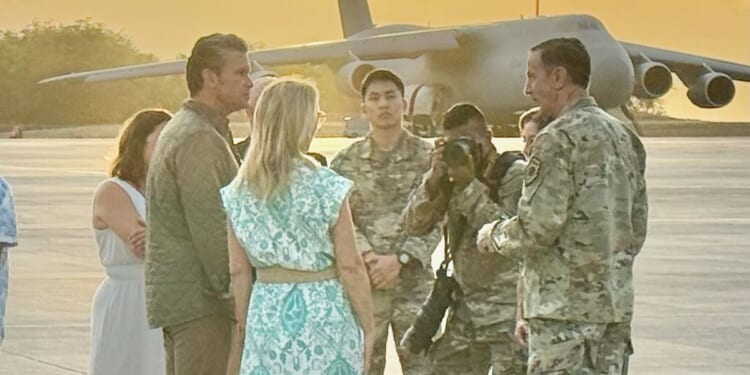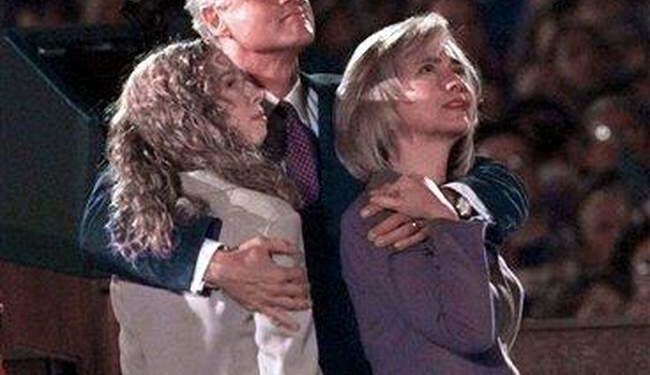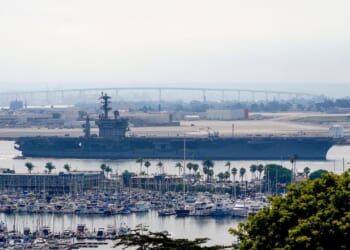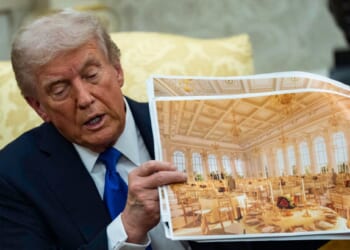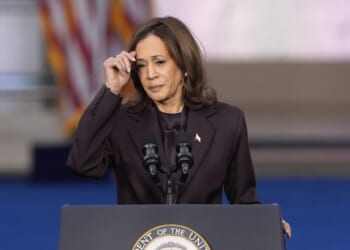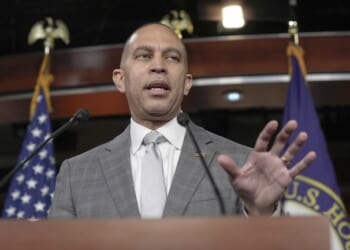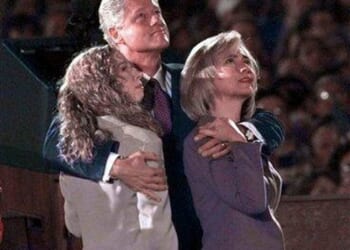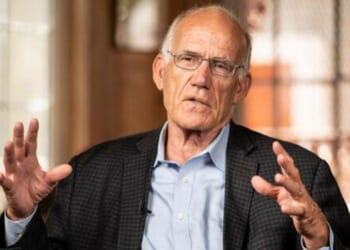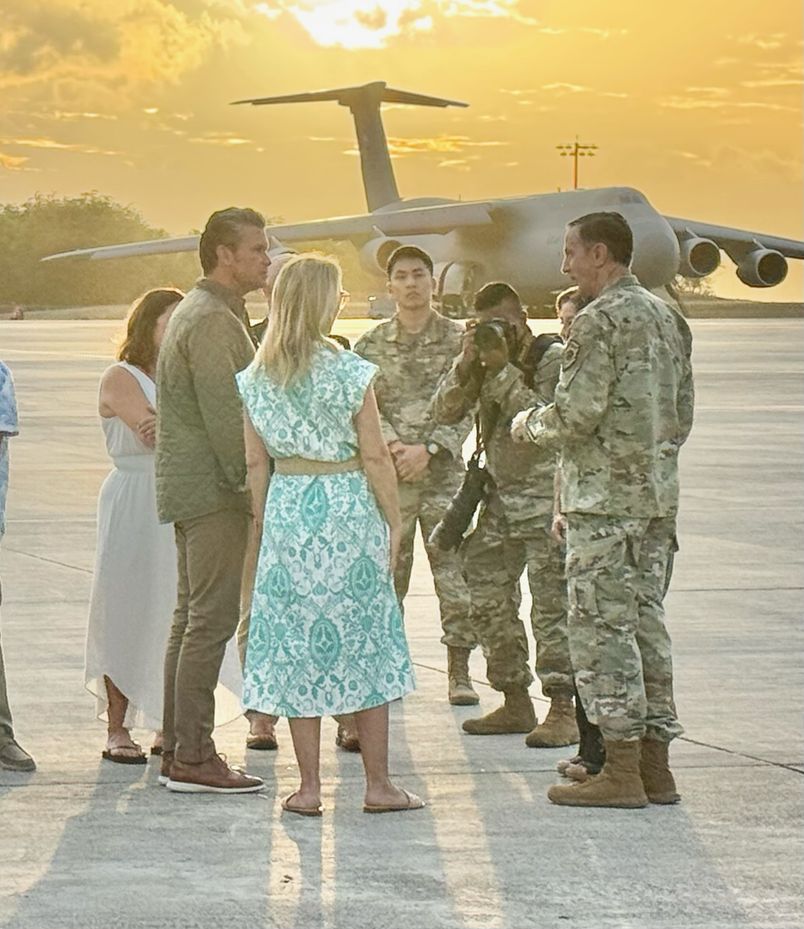
JOINT BASE PEARL HARBOR-HICKAM — Defense Secretary Pete Hegseth received an intelligence briefing in Hawaii from the U.S. Indo-Pacific Command that focused on threats to the region posed by China and other adversaries.
A senior defense official at the command said the Chinese Communist Party scaled back military drills this year as a result of a nationwide campaign seeking greater political loyalty under Chinese President Xi Jinping.
The loyalty “rectification” effort comes amid a major shakeup in the upper ranks of the People’s Liberation Army, or PLA, that also suggests significant problems in the Chinese military.
The briefing for the secretary included an overview of major threats emanating from the region, among them Chinese military and political activity and the tense military standoff on the Korean peninsula.
Hawaii was the first stop on a four-nation tour of the Asia Pacific for the secretary, who made no comments to reporters after arriving aboard an Air Force E-4B aircraft. The militarized Boeing 747 would serve as a long-range nuclear command post in wartime.
Mr. Hegseth and more than a dozen aides and a small group of reporters left earlier from Joint Base Andrews, Maryland on the jumbo jet.
Also joining the secretary on the first leg of a four-nation tour were his wife and several of his children. The family members remained on the island after Mr. Hegseth departed for Japan at the end of the two-hour intelligence briefing.
The senior official spoke to reporters prior to Mr. Hegseth’s arrival. That unclassified briefing was said to reflect some of the content provided to the secretary in more detail at his classified session.
The unclassified briefing provided new details on the recent firings of nine Chinese military leaders who were expelled from the CCP prior to a recent Party meeting in Beijing last week, followed by orders for military prosecutions.
The senior official said the battle against corruption in the PLA emanates from Chinese leaders’ fears the PLA is insufficiently under CCP control.
Communist officials have declared that the CCP must “control the gun,” not the opposite.
“That shouldn’t be a surprising statement to anybody, given that the PLA is the armed wing of the Communist Party,” the senior official said. “But it also reflects some uncertainty or discomfort with that relationship from the senior levels of the party.”
The ouster of seven senior PLA generals and two high-ranking admirals, the senior official said, is a sign of broader problems of both corruption and political disloyalty within the Chinese military.
One of the ousted leaders, Gen. He Weidong, was particularly significant because he had a strong legacy of support for, and a close relationship with, Mr. Xi.
“But nonetheless he fell along the wayside for apparent misdeeds as well,” the senior official said.
“From the command’s perspective, and from a purely military standpoint, I would highlight a couple of important points: One, there were four or five really key military command level leaders included in that group,” the official added.
For example, another notable move was the fall of Gen. Lin Xiangyang, the most recent commander of the Eastern Theater Command, the geographic commander in charge of planning and executing operations against Taiwan.
Another significant purge involved Gen. Wang Xiubin, until recently executive deputy director of the Central Military Commission Joint Operations Command Center.
Gen. Wang was also closely involved in planning for military action against Taiwan.
Both removals suggest PLA preparations for a military move against Taiwan are not going well.
Another key leader ousted in the purge was Vice Adm. Wang Houbin, until recently commander of the PLA Rocket Force that controls China’s nuclear and conventional missile arsenal.
The senior official said Adm. Wang is the second Rocket Force commander fired in the last three to four years, indicating continuing problems with the service once known as the Second Artillery Corps.
Other recent firings involved “mostly political people” in the PLA, the senior official said.
The removal of a general in charge of the PLA political work department – a unit charged with countering corruption – shows how deep the problem of corruption runs within the military.
“So those [firings] are important from the standpoint of the relationship between the commissars and the operational commanders, but it also kind of just lends itself into this overall perception that Xi Jinping is likely to have that he can’t trust anybody because the guys that are uniquely on the party side are corrupt,” the senior official said.
“The guys that are uniquely on the PLA operational command side of things also are proving to be corrupt,” the official added.
The senior official said the impact of the purge is not yet known, but both near-term and long-term impacts are expected.
U.S. intelligence agencies are watching closely to see whether Mr. Xi replaces the ousted generals right away or decides to operate with a scaled-back PLA command structure.
Three of the ousted officers were part of the ultimate power organ in China – the seven-member CCP Politburo Standing Committee. Leaving their seats vacant would give Mr. Xi even greater power.
On another topic, the PLA conducted smaller-scale exercises in this year’s training period than in past years, the senior official said.
The scaled-back maneuvers, which typically end in the fall, were the result of a “political rectification” campaign in the military ordered by Mr. Xi, who is also Central Military Commission chairman.
That campaign sought to boost loyalty under communist ideology amid the continuous high-level firings of senior PLA leaders.
Rectification is “something to do with aligning ’right-thinking’ and I think that’s an important point because it really gets to the focus of the Chinese Communist Party’s desire to really be the unquestioned authority for all things within the PRC and is clearly linked to the corruption campaign,” the senior official said.
As a result of the internal military discord from the rectification campaign, PLA exercises in the spring and summer were smaller, less complex militarily, and less focused on key tasks such as preparing for military action across the Taiwan Strait.
“The PLA had only a finite amount of time to do things, and with a major emphasis on this political rectification training, it inevitably ate into that,” the senior official said.
Another factor in reduced military training was the major armed-forces parade held in September to mark the anniversary of the end of World War II.
“When you take a fair number of units and key systems and put them into parade rehearsals for six or eight months, they’re all obviously not doing a whole lot of other important training during that same time frame,” the senior official said.
The massive military display in front of 29 world leaders in Beijing’s Tiananmen Square was used by the CCP as a major messaging event, to signal China’s growing military power.
Tens of thousands of goose-stepping Chinese troops paraded through the square followed by an array of new weapons. They included new tanks, armored vehicles, underwater and aerial drones, warplanes and numerous new missile systems.
The senior official said the large number of weapons includes a number of new systems but also involved some deception.
China showed off “lots of new systems, developmental systems, prototype systems … rolled out largely under the guise that they were part of the fielded force, which in many cases they frankly just aren’t there,” the senior official said.
Most of the newer weapons, especially drones, are not yet available to PLA troops nor are integrated into its forces.
“But it’s a pretty good snapshot of what China wanted to show and what they were trying to highlight to the world,” the senior official said.
Most of the drones shown during the parade were prototypes, rather than actual weapons. They included underwater aerial drones and robot tanks and armored vehicles.
“The vast majority of those remain in testing at some level, as opposed to being a program of record that’s part of the operational inventory,” the senior official said.
On Russia, the senior official said the Kremlin was relatively quiet in the Indo-Pacific during the summer military-training season.
One reason for decreased Russian military activity in the region is the depletion of funding for exercises during Moscow’s war in Ukraine.
“So there were no big, whopping exercises this year,” the senior official said.
The most noteworthy activities involving Russian forces were joint military operations with Chinese naval forces that circled Japan and the first joint submarine patrols.
The senior official said the joint submarine patrol was more of a “media event” about the supposed closeness of the Russian and Chinese militaries rather than a true effort to build integrated submarine warfare capabilities.
Another key threat to the Indo-Pacific remains North Korea, a reclusive communist state that also conducted a major military parade to show off its extensive hardware and weapons.
Ties between North and South Korea remain “troubled” with Pyongyang unreceptive to some outreach efforts by the new administration of President Lee Jae-myung.
North Korea has shown some signs of openness to reengaging with the Trump administration.
However, Pyongyang is demanding that the United States recognize it as a nuclear weapons state, something the U.S. so far is unwilling to do, maintaining that North Korea must give up its nuclear arsenal.

